Carl Van Vechten
| Carl Van Vechten | |
|---|---|
 Photographic self-portrait by Carl Van Vechten, taken in 1934 | |
| Born |
June 17, 1880 Cedar Rapids, Iowa, U.S. |
| Died |
December 21, 1964 (aged 84) New York City, U.S. |
| Education | Washington High School |
| Alma mater | University of Chicago |
| Occupation | Photographer |
| Spouse(s) |
Anna Snyder (1907–1912), Fania Marinoff (m. 1914–64) |
Carl Van Vechten (June 17, 1880 – December 21, 1964) was an American writer and artistic photographer who was a patron of the Harlem Renaissance and the literary executor of Gertrude Stein.[1]
Biography
Born in Cedar Rapids, Iowa, he was the youngest child of Charles and Ada Van Vechten.[2]:14 He graduated from Washington High School in 1898,[3] and later the University of Chicago[4] in 1903. In 1906, he moved to New York City. He was hired as the assistant music critic at The New York Times.[5] His interest in opera had him take a leave of absence from the paper in 1907, to travel to Europe to explore opera.[1] While in England he married his long-time friend from Cedar Rapids, Anna Snyder. He returned to his job at the New York Times in 1909, where he became the first American critic of modern dance. At that time, Isadora Duncan, Anna Pavlova, and Loie Fuller were performing in New York City. The marriage to Anna Snyder ended in divorce in 1912 and he wed actress Fania Marinoff in 1914.<ref name=Carl Van Vechten's Biography on nybooks.com>"Carl Van Vechten's Biography on nybooks.com". Retrieved July 10, 2012.</ref> Their marriage lasted until the end of his life, even while his relationships with men were an open secret.[5]
Van Vechten initially met Gertrude Stein in Paris in 1913.[6] They continued corresponding for the remainder of Stein's life, and at her death she appointed Van Vechten her literary executor; he helped to bring into print her unpublished writings.[2]:306
Several books of Van Vechten's essays on various subjects such as music and literature were published between 1915 and 1920. Between 1922 and 1930 Knopf published seven novels by Van Vechten, starting with Peter Whiffle: His Life and Works and ending with Parties.[7]
Van Vechten was interested in black writers and artists, and knew and promoted many of the major figures of the Harlem Renaissance, including Langston Hughes, Ethel Waters, Richard Wright, Zora Neale Hurston and Wallace Thurman. Van Vechten's controversial novel Nigger Heaven[4] was published in 1926. His essay "Negro Blues Singers" was published in Vanity Fair in 1926. Biographer Edward White suggests Van Vechten was convinced that Negro culture was the essence of America.[2]
His older brother Ralph Van Vechten died on June 28, 1927; when Ralph's widow Fannie died in 1928, Van Vechten inherited $1 million invested in a trust fund which was unaffected by the stock market crash of 1929; the fund provided financial support for Carl and Fania.[2]:242–244[8]
In the 1930s, Van Vechten began taking portrait photographs. Among the many individuals he photographed were Alvin Ailey, Edward Albee, Judith Anderson, Marian Anderson, Antony Armstrong-Jones, Pearl Bailey, Josephine Baker, James Baldwin, Tallulah Bankhead, Theda Bara, Harry Belafonte, Barbara Bel Geddes, Thomas Hart Benton, Leonard Bernstein, Mary McLeod Bethune, Karen Blixen, Jane Bowles, Marlon Brando, James Branch Cabell, Paul Cadmus, Erskine Caldwell, Truman Capote, Bennett Cerf, Marc Chagall, Katharine Cornell, Countee Cullen, Salvador Dalí, Ossie Davis, Giorgio de Chirico, Roald Dahl, Ruby Dee, Alfred Drake, Jacob Epstein, Ella Fitzgerald, F. Scott Fitzgerald, Lynn Fontanne, Dizzy Gillespie, Martha Graham, John Hersey, Billie Holiday, Lena Horne, Horst P. Horst, Zora Neale Hurston, Christopher Isherwood, Mahalia Jackson, Philip Johnson, Frida Kahlo, Eartha Kitt, Gaston Lachaise, Fernand Léger, Lotte Lenya, Sidney Lumet, Alfred Lunt, Norman Mailer, Alicia Markova, Henri Matisse, W. Somerset Maugham, Elsa Maxwell, Carson McCullers, Colin McPhee, Gian Carlo Menotti, Henry Miller, Joan Miró, Marianne Moore, Helen Morgan, Robert Morse, Patricia Neal, Ramón Novarro, Georgia O'Keeffe, Laurence Olivier, Christopher Plummer, Leontyne Price, Diego Rivera, Jerome Robbins, Paul Robeson, Cesar Romero, George Schuyler, Beverly Sills, Gertrude Stein, James Stewart, Alfred Stieglitz, Ada "Bricktop" Smith, Bessie Smith, Paul Taylor, Prentiss Taylor, Alice B. Toklas, Gloria Vanderbilt, Gore Vidal, Hugh Walpole, Evelyn Waugh, Orson Welles, Thornton Wilder, Thomas Wolfe, Anna May Wong, Lin Yutang and Richard Wright.[6][9]
After the 1930s, Van Vechten published little writing, though he continued to write letters to many correspondents.
Van Vechten died in 1964, at the age of 84, in New York City. He was the subject of a 1968 biography by Bruce Kellner, Carl Van Vechten and the Irreverent Decades,[10] as well as Edward White's 2014 biography, The Tastemaker: Carl Van Vechten and the Birth of Modern America.[2]
Archives and Museum Collections
Most of Van Vechten's personal papers are held by the Beinecke Rare Book and Manuscript Library at Yale University. The Beinecke Library also holds a collection titled "Living Portraits: Carl Van Vechten's Color Photographs Of African Americans, 1939–1964", a collection of 1,884 color Kodachrome slides.[11]
The Library of Congress has a collection of approximately 1,400 photographs, which it acquired in 1966 from Saul Mauriber. There is also a collection of Van Vechten's photographs in the Prentiss Taylor collection in the Smithsonian's Archives of American Art, and a Van Vechten collection at Fisk University. The Museum of the City of New York's collection includes 2,174 of Carl Van Vechten's photographs. Brandeis University's department of Archives & Special Collections holds 1,689 Carl Van Vechten portraits.[12] Van Vechten also donated materials to Fisk University to form the George Gershwin Memorial Collection of Music and Musical Literature.[2]:284
In 1980, concerned that Van Vechten’s fragile 35 mm nitrate negatives were fast deteriorating, photographer Richard Benson, in conjunction with the Eakins Press Foundation, transformed fifty of the portraits into handmade gravure prints. The album ’O, Write My Name’: American Portraits, Harlem Heroes was completed in 1983. That year, the National Endowment for the Arts transferred the Eakins Press Foundation’s prototype albums to the permanent collection of the Smithsonian American Art Museum.[13]
Works
- Music After the Great War (1915)
- Music and Bad Manners (1916)
- Interpreters and Interpretations (1917)
- The Merry-Go-Round (1918)
- The Music of Spain (1918)
- In the Garret (1919)
- The Tiger in the House (1920)
- Lords of the Housetops (1921)
- Peter Whiffle (1922)
- The Blind Bow-Boy (1923)
- The Tattooed Countess (1924)
- Red (1925)
- Firecrackers. A Realistic Novel (1925)
- Excavations (1926)
- Nigger Heaven (1926)
- Spider Boy (1928)
- Parties (1930)
- Feathers (1930)
- Sacred and Profane Memories (1932)
Gallery
 Norman Mailer, 1948
Norman Mailer, 1948 Eartha Kitt, 1952
Eartha Kitt, 1952 Arthur Schwartz, 1933
Arthur Schwartz, 1933 Cesar Romero, 1934
Cesar Romero, 1934 Gertrude Stein, 1935
Gertrude Stein, 1935.jpg) Giorgio de Chirico, 1936
Giorgio de Chirico, 1936 Fernand Léger, 1936
Fernand Léger, 1936.jpg) John Gielgud as Richard II, 1936
John Gielgud as Richard II, 1936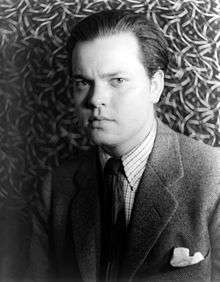 Orson Welles, 1937
Orson Welles, 1937 Anna May Wong, 1939
Anna May Wong, 1939 Albert C. Barnes, 1940
Albert C. Barnes, 1940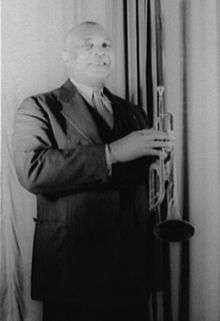 W. C. Handy, 1941
W. C. Handy, 1941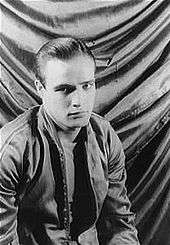 Marlon Brando, 1948
Marlon Brando, 1948 Billie Holiday, 1949
Billie Holiday, 1949 Harry Belafonte, 1954
Harry Belafonte, 1954 Ben Gazzara, 1955
Ben Gazzara, 1955 Robert Morse, 1958
Robert Morse, 1958 Christopher Plummer, 1959
Christopher Plummer, 1959 Karen von Blixen-Finecke, 1959
Karen von Blixen-Finecke, 1959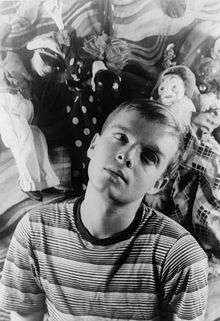 Truman Capote, 1948
Truman Capote, 1948 Gore Vidal, 1948
Gore Vidal, 1948 Dizzy Gillespie, 1955
Dizzy Gillespie, 1955 James Stewart, 1934
James Stewart, 1934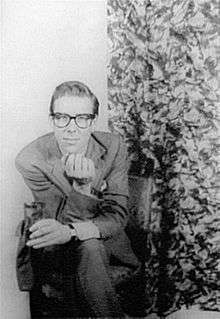 Antony Armstrong-Jones, 1958
Antony Armstrong-Jones, 1958 Lotte Lenya, 1962
Lotte Lenya, 1962 Gloria Davy, 1958
Gloria Davy, 1958 Laurence Olivier, 1939
Laurence Olivier, 1939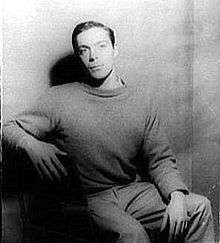 Paul Taylor, 1960
Paul Taylor, 1960
Notes
- 1 2 "Portraits by Carl Van Vechten – Carl Van Vechten Biography – (American Memory from the Library of Congress)". Memory.loc.gov. Retrieved 2010-03-09.
- 1 2 3 4 5 6 White, Edward (2014), The Tastemaker: Carl Van Vechten and the Birth of Modern America, New York: Farrar, Straus and Giroux, ISBN 978-0-374-20157-9
- ↑ "Carl Van Vechten's Camera Documented Personalities". Cedar Rapids Gazette. March 10, 1971. Retrieved November 17, 2012.
- 1 2 "Carl Van Vechten Biography". Biography.com. December 21, 1964. Retrieved 2010-03-09.
- 1 2 Sanneh, Kelefa (February 17, 2014). "White Mischief: The passions of Carl Van Vechten". The New Yorker.
- 1 2 "Carl Van Vechten: Biography from". Answers.com. December 21, 1964. Retrieved 2010-03-09.
- ↑ "Carl Van Vechten Facts, information, pictures | Encyclopedia.com articles about Carl Van Vechten". Encyclopedia.com. Retrieved 2012-06-17.
- ↑ Smalls, James, The Homoerotic Photography of Carl Van Vechten: Public Face, Private Thoughts, Philadelphia: Temple University Press, p. 24, ISBN 1-59213-305-3
- ↑ "Prints & Photographs Online Catalog – Van Vechten Collection – Biography". Lcweb2.loc.gov. Retrieved 2010-03-09.
- ↑ Bruce Kellner (1968) Carl Van Vechten and the Irreverent Decades, University of Oklahoma Press, Norman OK OCLC 292311
- ↑ Living Portraits: Carl Van Vechten's Color Photographs Of African Americans, 1939-196. Beinecke Rare Book and Manuscript Library at Yale University. Retrieved on 2009-07-08.
- ↑ "Carl Van Vechten photographs". Robert D. Farber University Archives & Special Collections Department. Brandeis University. Retrieved 25 August 2016.
- ↑ "Harlem Heroes: Photographs by Carl Van Vechten". Exhibitions - Smithsonian American Art Museum. Smithsonian Institution. Retrieved 25 August 2016.
References
- Bird, Rudolph P., editor (1997). Generations in Black and White: Photographs of Carl Van Vechten from the James Weldon Johnson Memorial Collection, University of Georgia Press. ISBN 0820319449
- Kellner, Bruce (1968). Carl Van Vechten and the Irreverent Decades. Norman: University of Oklahoma Press. ISBN 0-8061-0808-8
- Kellner, Bruce (Ed.) (1980). A Bibliography of the Work of Carl Van Vechten. Westport: Greenwood Press. ISBN 0-313-20767-4
- Kellner, Bruce (Ed.) (1987). Letters of Carl Van Vechten. New Haven: Yale University Press. ISBN 0-300-03907-7
- Smalls, James (2006). The Homoerotic Photography of Carl Van Vechten: Public Face, Private Thoughts. Philadelphia: Temple University Press. ISBN 1-59213-305-3
- White, Edward (2014). The Tastemaker: Carl Van Vechten and the Birth of Modern America. New York: Farrar, Straus and Giroux. ISBN 978-0-374-20157-9
- Hurston, Zora Neale (1984). "Dust Tracks on a Road, An Autobiography". University of Illinois Press. ISBN 0-252-01047-7
External links
| Wikimedia Commons has media related to Carl Van Vechten. |
- Works by Carl Van Vechten at Project Gutenberg
- Works by or about Carl Van Vechten at Internet Archive
- Works by Carl Van Vechten at LibriVox (public domain audiobooks)

- Images by Carl Van Vechten in the Collections of the Museum of the City of New York
- Creative Americans: Portraits by Carl Van Vechten at the Library of Congress features a searchable database of photographs taken by Van Vechten.
- Carl Van Vechten's Portraits from the collection of the Beinecke Rare Book and Manuscript Library at Yale University features a searchable database of over 9,000 black-and-white prints
- Carl Van Vechten photographs, 1932–1964 at Brandeis University's Archives & Special Collections, contains 1,689 Van Vechten portraits.
- Living Portraits: Carl Van Vechten's Color Photographs of African Americans, 1939–1964, Beinecke Rare Book and Manuscript Library at Yale University, features a searchable database of 1,884 rare color Kodachrome slides
- Extravagant Crowd: Carl Van Vechten's Portraits of Women, Beinecke Rare Book and Manuscript Library at Yale University
- Postcards from Manhattan: The Portrait Photography of Carl Van Vechten at Marquette University reproduces hundreds of portrait postcards sent by Van Vechten to Wisconsin artist Karl Priebe from 1946–1956.
- Guide to the Carl Van Vechten papers, 1833–1965. Manuscripts and Archives, New York Public Library.
- Carl Van Vechten collection of papers, 1911–1964. Berg Collection of English and American Literature, New York Public Library.
- Carl Van Vechten theatre photographs, 1932-1943, held by the Billy Rose Theatre Division at the New York Public Library for the Performing Arts
- Booknotes interview with Emily Bernard on Remember Me to Harlem: The Letters of Langston Hughes and Carl Van Vechten, 1925–1964, April 22, 2001.